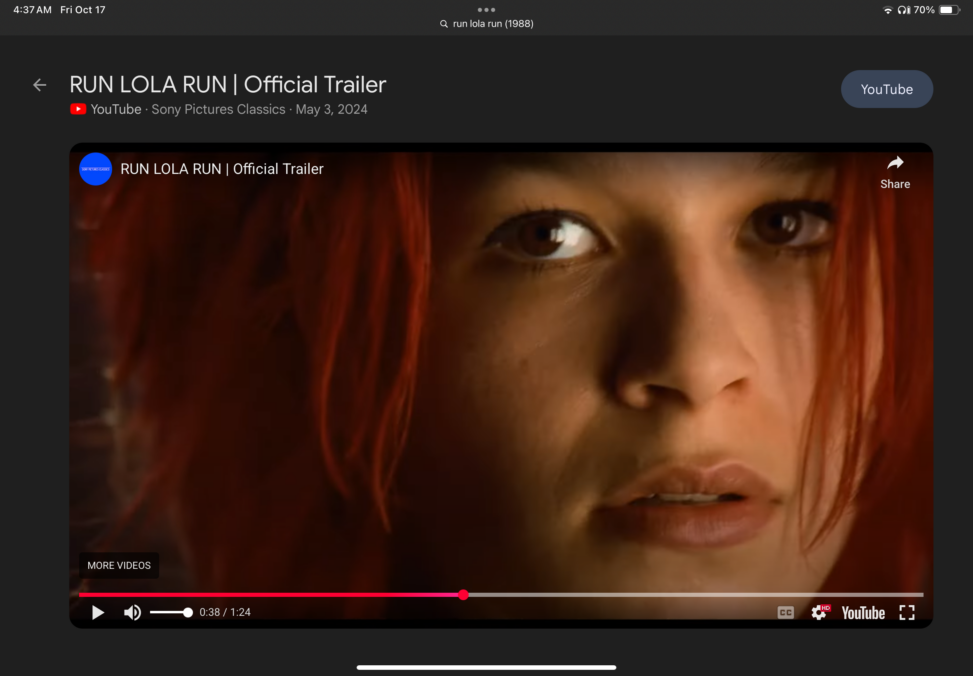Run Lola Run (1998) is a movie directed by Tom Tykwer. It tells the story of Lola, who must find 100,000 Deutschmarks in 20 minutes to save her boyfriend Manni from being killed by gangsters after he loses his boss’s money. Lola goes back in time three times, three separate “runs” that replay the same 20-minute period, each unfolding differently depending on Lola’s decisions and the random events she encounters.
In the first run, Lola runs through Berlin with her red hair and combat boots, aiming to find her father, a bank manager, to request funds. He rejects her request, and she learns of his intention to abandon her mother from another woman. Lola runs to meet Manni, but she is a moment too late as their confrontation results in Manni stealing from a supermarket, and the authorities shoot both. This conclusion establishes the film’s circular storyline. The plot twists with Lola’s scream as time reverses, and the tale restarts.
Some changes can be seen in the second run. Lola bumps into the dog, trips, and falls down the stairs, causing her to waste some time, and she bumps into a woman with a baby as she runs to her father’s bank, changing the sequence of events. She takes a firearm from a security officer, robs her father’s bank, and reaches Manni on time. This time, though, Manni is struck by a speeding ambulance just moments before delivering the money. This shows how our actions, no matter how small we think they are, can change our fate or the fate of our loved ones.
In the third run, she avoids the mistakes she made before. She avoids the man with the dog and does not bump into the woman with the baby. She does not rob the bank and wins the money at a casino through sheer willpower and luck. At the same time, Manni takes back the lost bag from the homeless man who discovered it and hands him his gun. Manni gives the money to his boss, and they both reunite happily.
Breadcrumbs: Throughout the movie, understated visual hints predict future events, like the ambulance driver almost colliding with Lola in the second run, but rescuing her in the third run. Likewise, the casino scene reflects the concept of wagering with time and destiny. Objects and interactions, like the firearm Manni gave the homeless man, the dog, and the lady with the baby, recur in slightly different situations, emphasizing how recurrence fosters change.
Tykwer employs split screens, animated sequences, and quick edits to transform Run Lola Run into a visual exploration of time and causation. Every run isn’t merely a reset; it represents growth, demonstrating that through repetition, transformation can occur.

Provide Feedback